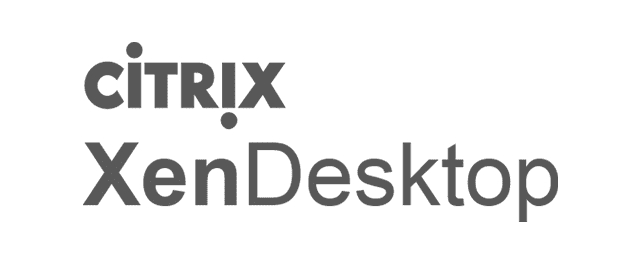Citrix XenDesktop 7.x – Citrix Session Printers are not visible via Control Panel, Devices And Printers
Affected System: Windows Server 2012 R2 as well as Windows Server 2016
Citrix Environment: XenDesktop 7.15 LTSR CU2
Helping making IT safer for everyone

Citrix XenDesktop 7.x – Citrix Session Printers are not visible via Control Panel, Devices And Printers
Affected System: Windows Server 2012 R2 as well as Windows Server 2016
Citrix Environment: XenDesktop 7.15 LTSR CU2

Just recently I was tasked to identify all Citrix Receiver Versions connecting to a Citrix XenDesktop 7.x environment.
For starters, to get information on current sessions issue the following PowerShell cmdlets on your Citrix Broker Server:
Add-PSSnapin *Citrix* Get-BrokerSession | Select MachineName,UserName,ClientPlatform,ClientVersion,*Protocol* | Out-GridView
To get hands on every single information of your current Broker Sessions simply run:
Get-BrokerSession | Out-GridView
Now, in terms of historical session and connection information you have to query the OData API (http://<ServerBrokerFQDN>/Citrix/Monitor/OData/v2/Data), as with the Get-BrokerSession cmdlet you only get information on current sessions. So in case you’re looking for historical reports and data, which you cannot find in the Director Web UI, you could simply create a custom report with Microsoft Excel by connecting to the Data Feed.
This leaves me with recommending the following Citrix Blog Article, that explains how to
The result might look something like this:
You can then tinker with the different tables available through the Data Feed in order to achieve the resultant data set required for your purpose. As opposed to the aforementioned Citrix Blog you could select the following tables to even get information on Citrix Receiver Versions, Client Names, and corresponding User Names:
Just have a look at the underlying SQL DB and its Database Diagram in order to reveal the tables’ relationships:
| Relationship Name | Table Name | Tables Specification | Columns Specifiation |
|---|---|---|---|
| Session_User | Sessions | Foreign Key Column | UserId |
| Users | Primary Key Column | Id | |
| Connection_Session | Foreign Key Column | SessionKey | |
| Primary Key Column | SessionKey | ||
| Session_CurrentConnection | Connections | Foreign Key Column | CurrentConnectionId |
| Sessions | Primary Key Column | Id |
Then you should be able to rebuild these relationships within Microsoft Excel and get the resultant set of data including corresponding user names:
Otherwise you could create a corresponding View directly within SQL Server Management Studio on the server hosting your XenDesktop SQL Monitoring database. I created one and called it v_ReceiverVersions, thus allowing me to access the data through Excel as well. The custom View includes the aforementioned tables
SELECT MonitorData.Connection.ClientName, MonitorData.Connection.ClientVersion, MonitorData.Connection.BrokeringDate, MonitorData.[User].Upn FROM MonitorData.Connection INNER JOIN MonitorData.Session ON MonitorData.Connection.SessionKey = MonitorData.Session.SessionKey AND MonitorData.Connection.Id = MonitorData.Session.CurrentConnectionId INNER JOIN MonitorData.[User] ON MonitorData.Session.UserId = MonitorData.[User].Id
This setup allows me to filter the available data (i.e. set to the required period in time by utilizing the BrokeringDate) by either choosing ClientName, ClientVersion or UPN:
The data available in Citrix Director is dependent on your Citrix License, which in turn determines your usage data retention within Citrix Director. As per Citrix:
- All editions: Director – real-time monitoring and basic troubleshooting (up to 7 days of data)
- XD7 Platinum: EdgeSight performance management feature – includes #1 + historical monitoring (up to a full year of data through the monitoring SQL database)
- XD7 Platinum + NetScaler Enterprise: EdgeSight performance management and network analysis – includes #2 plus 60 mins. of network data
- XD7 Platinum + NetScaler Platinum: EdgeSight performance management and network analysis – includes #2 plus unlimited network data
Further reading:
I came upon this quite frequent issue with my XenDesktop 7.8 Hosted Shared Desktop environment based on Windows Server 2008 R2. Folder Redirection via GPO is in place, whereas Citrix User Profile Management is not used.

Starting with Citrix XenDesktop 7.x there have been some features that have been deprecated by Citrix, such as LPT and COM Port Mapping, which are not working as expected or properly after upgrading to VDA 7.x. I stumbled upon this quite annoying issue as soon as I upgraded my existing Citrix XenApp servers to the latest XenDesktop 7.x, i.e. Hosted Shared Desktops with Virtual Desktop Agents v7.x.

This one’s quite easy, actually. Did you ever wonder how to remove those GoTo Icons from your StoreFront Store and/or Start Menu Shortcuts?

Citrix Receiver for Mac – Session Printer Mapping Issues – Printers don’t show or won’t get mapped
Update: Have a look at Carl’s article as well: Print Driver for Non-Windows Clients
As per Citrix CTX140208 and CTX139020:
When non-Windows Receivers connect to a Windows 2012 Server with Universal Print Driver (UPD) options configured for client printers, the Post-script (PS) and PCL drivers might not be available, therefore the printers will not get auto-created. As a workaround, to use the Citrix UPD for non-window Receivers, like Mac and Linux, install appropriate drivers on the server manually:
- PS driver = HP Color LaserJet 2800 Series PS
- PCL4 driver = HP LaserJet Series II
- PCL5c driver = HP Color LaserJet 4500 PCL 5
With my Windows Server 2012 R2 I ran into some issues. While trying to add the aforementioned Printer Drivers manually I realized that something was wrong:
As you can see from the screenshot the button Windows Update is unavailable. This left me with investigating why that is the case. After a little bit of research I ended up with two possible solutions:
Configure Windows Update via Registry:
- Run registry editor. Click Start then type regedit and press Enter
- Navigate to HKEY_LOCAL_MACHINE\SOFTWARE\Policies\Microsoft\Windows\DriverSearching
- Change value of REG_DWORD DontSearchWindowsUpdate to 0
- Change value of REG_DWORD DontPromptForWindowsUpdate to 0
- Run a Command Prompt. Click Start then type cmd and press Enter
- Execute gpupdate /force
Furthermore I found this in the comments here:
HKLM\Software\Policies\Microsoft\Windows\DriverSearching – REG_DWORD – searchorderConfig = 0
This removes that Windows Update button from the Add Printer Wizard. You can either set this key to “2”, or just delete the key to restore the Windows Update button.
This is the “Disable automatic updates of drivers from Windows Updates” feature above.
Install printer locally:
Whereas adding just the required drivers left me with no Windows Update button to click, I found this article pointing me in the right direction:
I had the same issue, but found it only occurred when I was trying to add a network printer. When I try to add a local printer the button shows up. So….. I installed a local printer, allowed Windows Update to download the new drivers and then deleted the local printer. Next I add the network printer again, but this time, because the list of drivers has been refreshed, I didn’t need the Windows Update button because my printer is now in the list.
Upon reading CTX140208 once more it became obvious and clear that I didn’t read the article with the required attention to detail, as it clearly states:
- From the Windows Server 2012, choose Add a printer from Devices and Printers.
- Continue through the wizard as if you are adding a local printer though it is not attached.
- Click Add a local printer > select LPT1: (Printer Port) > click Windows Update.
Silly me!
2015-11-09 Update:
As Alexander Gassner pointed out here I could have checked my Device Installation Settings as well, as they tend to prohibit the Windows Update functionality too:
I launched Print Management console, drilled down to the Printers node, right-clicked it and chose Add Printer:
Then selected Add a new printer using an existing port with LPT1:
Then selected Install a new driver:
The Windows Update button was finally there, I hit it, and waited for the updated drivers to get downloaded:
Afterwards I was able to select the required drivers and install the required printers:
As Citrix pointed out in CTX139020, “if there are two versions of this driver displayed, choose the Microsoft version“.
In the end it looked like this:
Further reading:

Almost everybody has struggled with the now infamous Error 1030 (The connection to “ApplicationName” failed with status (1030)) when connecting with Citrix Receiver for Windows to XenDesktop through NetScaler and StoreFront. There even is an whole armada of articles available out there, totally dedicating their content to troubleshooting this quite generic network error indicating that the connection has failed. Just google it!
The solution to this error? Well, it depends…

Citrix XenDesktop 7.x – Black Screen when connecting to Published Desktop
When connecting to a Windows Server 2008 R2 Published Desktop (provisioned as a VM, not a physical machine) with XenDesktop 7.x you might receive a black and blank Desktop, no Desktop Icons are shown, and the Desktop stays that way:
Whereas connecting with RDP works normally, as long as the users are members of the local group Direct Access Users.
There are no significant Warnings and/or Error messages in the corresponding server’s Application and/or System Event Log. Everything seems to look and work as expected. In my case the error started showing up after moving the VM from one Hyper-V server to another Hyper-V server.

Upon upgrading Citrix Profile Management to v5.2.1 on one of my Workers and rebooting my users were unable to connect to that server. It came down to a Load Evaluator Index of 10000:

After upgrading Citrix Director to v7.6.300 in order to implement the newly added Framehawk Support I ran into an error after launching Citrix Director: